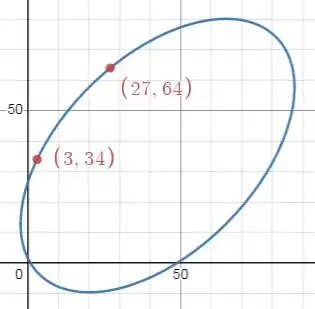Let all variables be positive integers. Consider the forms,
$$a^2+b^2=(b+1)^2\tag1$$ $$a^3+b^3+c^3=(c+1)^3\tag2$$
The smallest solutions are the well-known,
$$3^2+4^2=5^2$$ $$3^3+4^3+5^3=6^3$$
All solutions of Eq.1 are covered by only one polynomial parameterization. On the other hand, not all solutions of Eq.2 are covered by its three known parameterizations.
I. Family 1
$$(3 n^2)^3 + (6 n^2 - 3n + 1)^3 + (9 n^3 - 6n^2 + 3n - 1)^3 = (9 n^3 - 6n^2 + 3n)^3$$
$$3^3 + 4^3 + 5^3 = 6^3\\ 12^3 + 19^3 + 53^3 = 54^3\\ 27^3 + 46^3 + 197^3 = 198^3$$
Note: $F(n) = (6, 54, 198)/6 = 1, 9, 33,\dots$ is A005920, or the "tricapped prism numbers".
II. Family 2
$$(3 n^2)^3 + (6 n^2 + 3n + 1)^3 + (9 n^3 + 6n^2 + 3n)^3 = (9 n^3 + 6n^2 + 3n + 1)^3$$
$$3^3 + 10^3 + 18^3 = 19^3\\ 12^3 + 31^3 + 102^3 = 103^3\\ 27^3 + 64^3 + 306^3 = 307^3$$
Note: $F(n) = (18, 102, 306)/3 = 6, 34, 102,\dots$ is A067389.
III. Family 3
$$(n)^3 + (3n^2 + 2n + 1)^3 + (3n^3 + 3n^2 + 2n)^3 = (3n^3 + 3n^2 + 2n + 1)^3$$
$$1^3 + 6^3 + 8^3 = 9^3\\ 2^3 + 17^3 + 40^3 = 41^3\\ 3^3 + 34^3 + 114^3 = 115^3$$
Note: $F(n) = 3n^3 + 3n^2 + 2n = 8, 40, 114,\dots$ is A143943, or "the Wiener index of a chain of $n$ squares".
Update: (Jan 22, four months later)
Courtesy of an insight by Adam Bailey in this post, given $x^3+y^3+z^3=(z+1)^3$ we now realize that $(x,y)$ of Family 2 and 3 are just lattice points on the same ellipse. Do the substitution, $z = (k + 1)(x - 1) + k y\,$ where $k = \dfrac{3n^2+1}{3n}$ and, after removing a trivial factor, we get the ellipse,
$$3n^2(x^2 - xy + y^2) - (1 + 6n + 12n^2 + 18n^3 + 9n^4)x - (1 + 3n^2 + 9n^4)y + (1 + 3n + 9n^2 + 9n^3 + 9n^4) = 0$$
where two lattice points are $(x_1, y_1)$ and $(x_2, y_2)$ from Family 2 and 3, respectively. For example, let $n=3$ so,
$$27(x^2 - x y + y^2) - 1342x - 757y + 1063 = 0$$
which for this $n$ has only 2 lattice points,
thus we can use these coordinates,
$$27^3 + 64^3 + 306^3 = 307^3\;\\ 3^3 + 34^3 + 114^3 = 115^3$$
and so on for infinitely other $n$.
IV. Unknown Families?
$$14^3 + 23 ^3 + 70^3 = 71^3\\ 21^3 + 46^3 + 188^3 = 189^3\\ 16^3 + 51^3 + 213^3 = 214^3\\ \;9^3 \,+\, 58^3 + 255^3 = 256^3\\ 15^3 + 64^3 + 297^3 = 298^3$$
These and the families above are the primitive solutions with $c<307$.
V. Similar equalities
By reverse-engineering those identities,
$$(an^2+bn+c)^3+(dn^2+en+f)^3+(pn^3+qn^2+r)^3=(pn^3+qn^2+rn+s)^3$$
collecting powers of $n$, equating everything to zero, it seems those three are the only quadratic-cubic identities. Turns out there is also the form $a^3+b^3+c^3 = (c\color{blue}{+3})^3$,
$$(m^2)^3 + (2 m^2 + 3m + 3)^3 + (m^3 + 2m^2 + 3m)^3 = (m^3 + 2m^2 + 3m \color{blue}{+3})^3$$
$$(m^2)^3 + (2 m^2 - 3m + 3)^3 + (m^3 - 2m^2 + 3m \color{blue}{-3})^3 = (m^3 - 2m^2 + 3m)^3$$
which, for $m=3n$, can be factored out into $a^3+b^3+c^3 = (c+1)^3$.
VI. Question
Just like $a^3\pm b^3 \pm c^3 = 1$ has infinitely many polynomial parameterizations (where degrees are getting higher and higher), does $a^3+b^3+c^3 = (c+1)^3$ also have other families with degree higher than the cubic polynomials in this post?

I coded a simple VB6 program and found $171$ solutions with $c<26755$
Did you miss (22,27,255,256)? Do you want me to post my results and in what order?
– Old Peter Sep 29 '23 at 18:50